Wireless active speakers are gaining ground fast. In the last two years, we have written more about this topic than throughout Lyd & Bilde’s lifetime. But is it possible in the highest tier, or is there still a need for good old-fashioned analog technology in the high-end segment?
Dali clearly believes that the time has come, and has launched an active version of the company’s second highest series, Rubicon 2 C and the floor model 6 C, which we are testing here. However, it is not a farewell to passive speakers, for the existing passive Rubicon series remains unchanged.
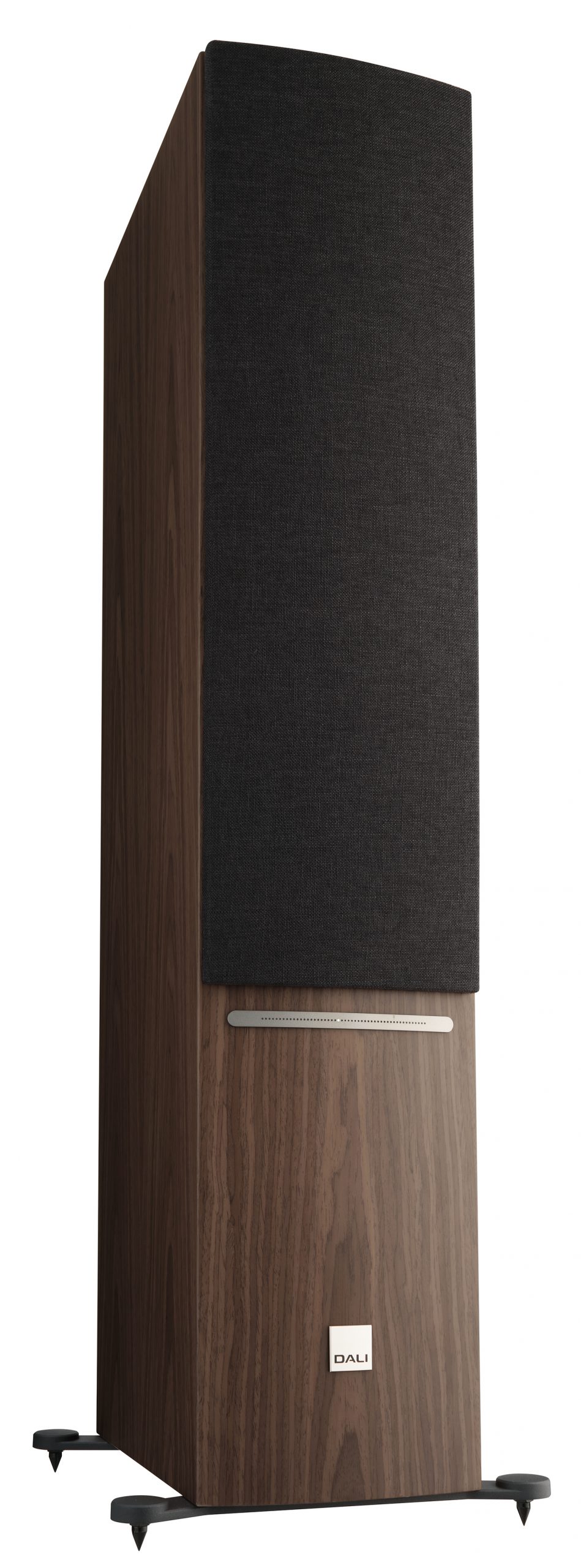
Two and a half plus a half
Rubicon 6 C is a full-grown but slim floor-standing speaker. There are a total of four speaker units in the Rubicon 6 C: two identical 6.5 “bass units with a wood fiber membrane and the 28 mm dome and band tweeter that together make up the Dalis hybrid tweeter.
This is not a three-way or a four-way construction, but a hybrid configuration with extended fractional calculation. It is mainly a two-way speaker, but since one of the two basses only plays in the deepest area, it becomes a 2.5-way construction. The same thing happens at the opposite end of the spectrum, where the treble band helps from 14 kHz without the dome tweeter being cut off with a filter, and we end up with what Dali calls “2.5-way plus half”!
In order not to be too easy, there is also talk of a combination of active and passive sharing. There are two 250 W amplifiers in each speaker. They operate the bass and treble sections, respectively. The lowest bass is passively cut off at 800 Hz with a single coil, and the same happens for the treble band, which is cut off with a single capacitor and a damping resistor at 14 kHz. To go all the way and give each unit its own power amplifier would, according to Dali, “be enormously expensive, without making a noticeable difference”. The amplifiers in Rubicon C (and also in Callisto) are a specially developed class D construction.
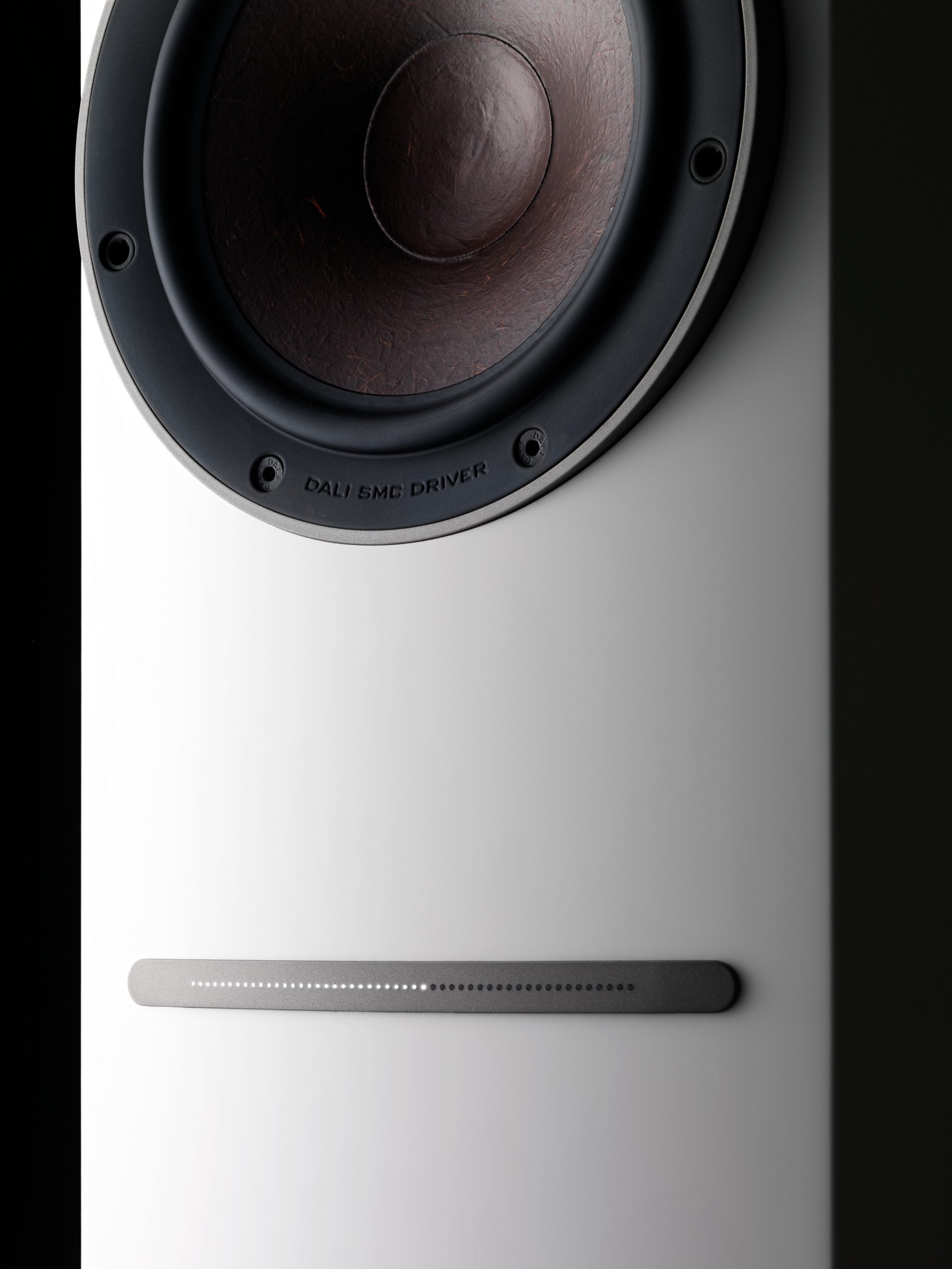
The finish is classic and absolutely beautiful – something you can also expect at this price. Rubicon 6 C is available in white or black high-gloss lacquer and veneered with real walnut. The cabinet is otherwise the same as in the passive version, only with a cut-out in the front of a horizontal LED strip that shows volume setting, as well as a control panel on the back that also houses the amplifier and where you select the speakers placement in the stereo setup.
There is no setting for adjusting the bass in relation to placement close to the back wall or in the corner.
Sound Hub
Even if the speakers are wireless, they must still be able to be connected to wired signal sources. The so-called Sound Hub is the wireless connection center for the system. At the back of the high-gloss black plastic box you will find two pairs of analog inputs, two optical digital and one coaxial digital. As with the speakers, there is a hidden display that appears when the speakers are to be connected wirelessly, and the location in the room must be determined.
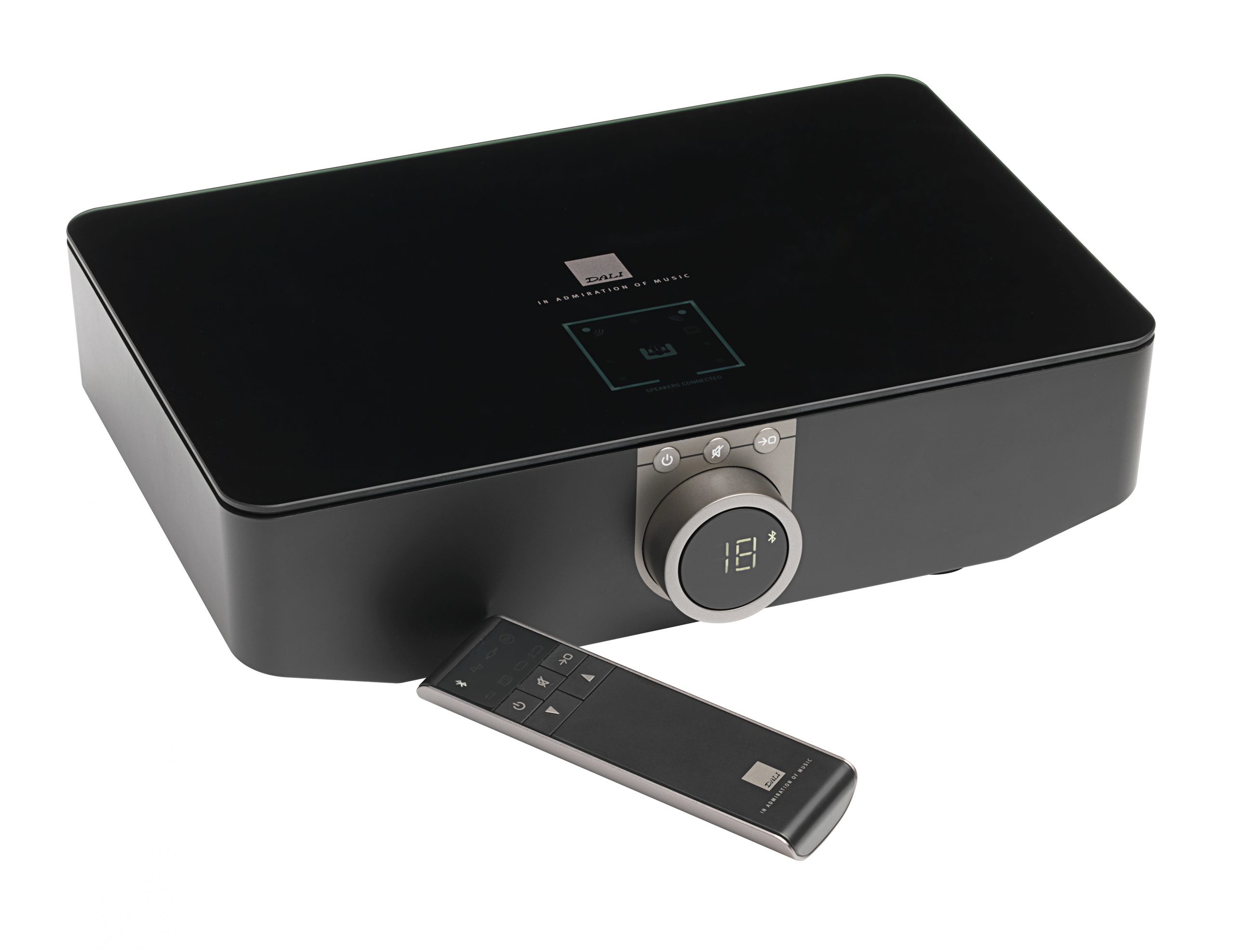
The hub also has two “hatches” for expansion modules. So far, however, there is only one module, namely a Bluesound extension, which provides wireless access to a wide range of leading streaming services, including Spotify, Tidal and TuneIn. There is no official information on what other upcoming modules will contain. However, as the system supports up to eight audio channels, it will be strange if at some point an HDMI module is not available to take advantage of this.
Bluesound modules are an additional purchase supplement, but the Hi-Fi Club has chosen to include it in the purchase “at least for a while yet.”
Of course, the hub also has wireless reception of Bluetooth signals, such as AAC, AptX and AptX HD, which support HD audio. The Bluesound module also supports the compressed HD audio format MQA, which is used on Tidal.
The Sound Hub is the same as the one used on the Callisto system, and it is Dali’s own – in contrast to WISA – which B&O and System Audio have chosen to use.
The connection between hub and speaker is made with 24-bit / 96 kHz HD resolution. However, the connection itself is 30-bit deep. The last bits are used for error correction and volume control, speaker placement, and more.
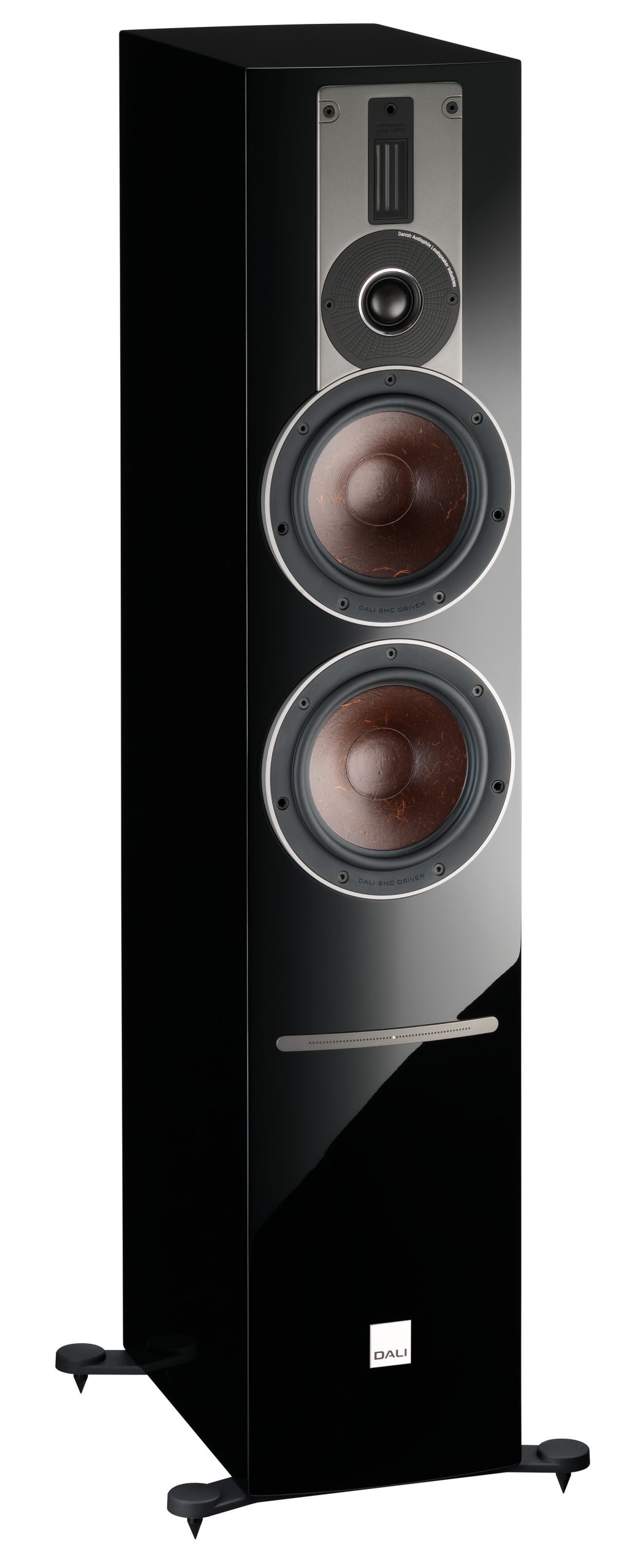
The sound of Dali Rubicon 6 C
I was wondering if the sound picture from Rubicon 6 C would look like the one from Callisto 2 C. There are quite right speakers in completely different size and price ranges, but the wireless platform and amplifier are the same. The units, which are Dali’s own production, are also similar to the surface, but are more expensive versions where, according to Dali, extra work has been done with the materials. For example, the mounting beam on the hybrid tweeter is in aluminum – and not made of plastic as in the cheaper series.
Rubicon 6 C is not a speaker that catches the eye right away. There are no tone areas that germinate in the ears right away. This is not necessarily a bad thing, as the speakers that impress in the store are not always the ones you want to live with in the long run.
Rubicon 6 C is a full-grown floor-standing speaker, and with DSP correction and a quarter kilowatt in the back, the two 6.5 “bass units deliver an absolutely convincing bottom. There is a full level all the way down to 37 Hz where the speaker thanks. And yet more important is that the nuance and precision are in place.
The bass capabilities also mean that you have to pay a little more attention to the location. In my living room they had to be three-quarters of a meter from the back wall and one meter from the corner. And there was still plenty of bottom.
Broken illusions
Rubicon 6 C is a very precise and revealing repeater in the midrange. It should have all the praise for it, but you must be aware that you may hear things that were not intended. A common phrase among hi-fi reviewers is “it was like hearing my records for the first time!” Sometimes that phrase is true, but it can also mean that you have to give up some illusions.
I often return to the piece Moonlight on Spring River with Chinese Zhao Cong. Here, crazy pipe string strings are combined with temple drums and an electronic bottom. And everything is on a huge acoustic stage. Or does it? Here we come back to another hi-fi phrase, namely “reproducing the music as it sounded in the studio.” In the real world, music is almost never played in one take, but rather a patchwork of single recordings.
Each room
Back to Moon Light on Spring River. The recording includes pipe playing, a Chinese choir, percussion and an electronic bottom. The chorus and pipe are left in the soundscape, while the percussion and synthesizer are just behind the speakers. But the reverberation and size of the room are different on the three elements.
The thing is, Zhao Cong never visited Focus Recording’s studio in Vanløse. She and the choir were recorded in China (with Neuman U47 microphones), and the rest was put on in the studio in Denmark. And to make it all complete, other parts of the album Sound of Chine were also recorded in Prague. When you can not ask Hans Nielsen, who unfortunately died a few years ago, I instead called Ole Lund Christensen who was friends with Nielsen, and who was responsible for the decoration of the Focus studio. Ole confirms how the recording was made.
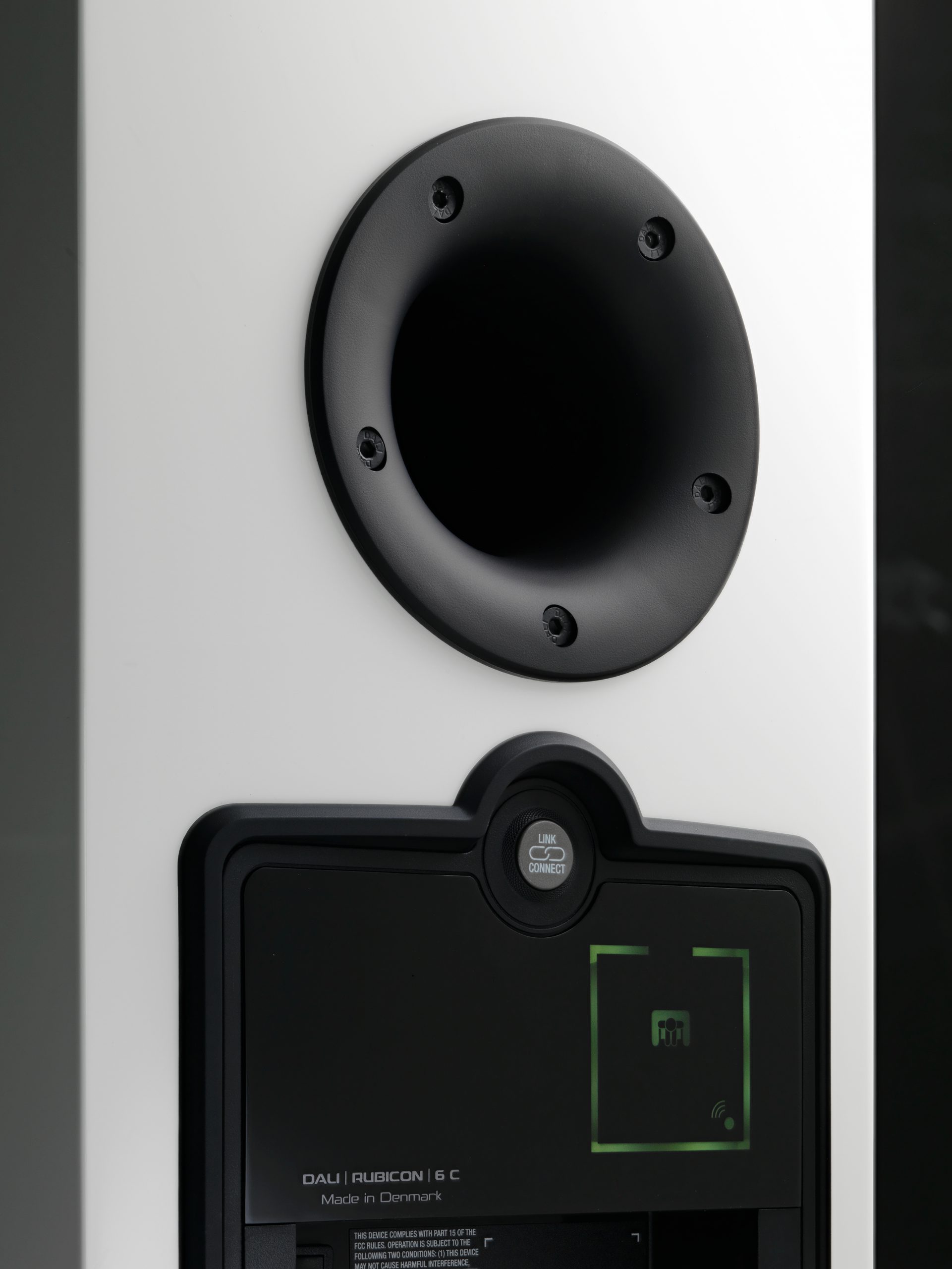
Errors are required
The purpose of this story is not to take the shine of the piece of music. Moon Light on Spring River is and will be a fantastic shot. But just to remind you that the reality we as music and hi-fi lovers cultivate is most often an illusion.
As a hi-fi reviewer, you eventually collect a toolbox of pieces of music that are used in the work, and which you know inside and out. These are usually good recordings, but not necessarily perfect. For part of the test may be to find out if the equipment can reveal known faults. It could be a slightly noisy breathing, talk in the background or perhaps the fact that the instruments are not recorded at the same time and in the same place.
When we tested the Dali Callisto 2 C, the tweeter was praised for its resolution, but the impression was still marked by the broad lines. Rubicon 6 C definitely does not lack an overview, but there are more details at the top. It provides a sound image with a lot of air, where you can immerse yourself in percussion sensibilities and string playing.
The selection of active speakers in the high-end class is still limited – and it is dominated by Danish speakers. We have previously tested the Dynaudio Focus 20 XD, but have not listened to the floor models that are direct competitors in terms of price and frequency. The details at the top, and the fact that the junction box is included in the system price, however, tip the scales in Dali’s advantage.
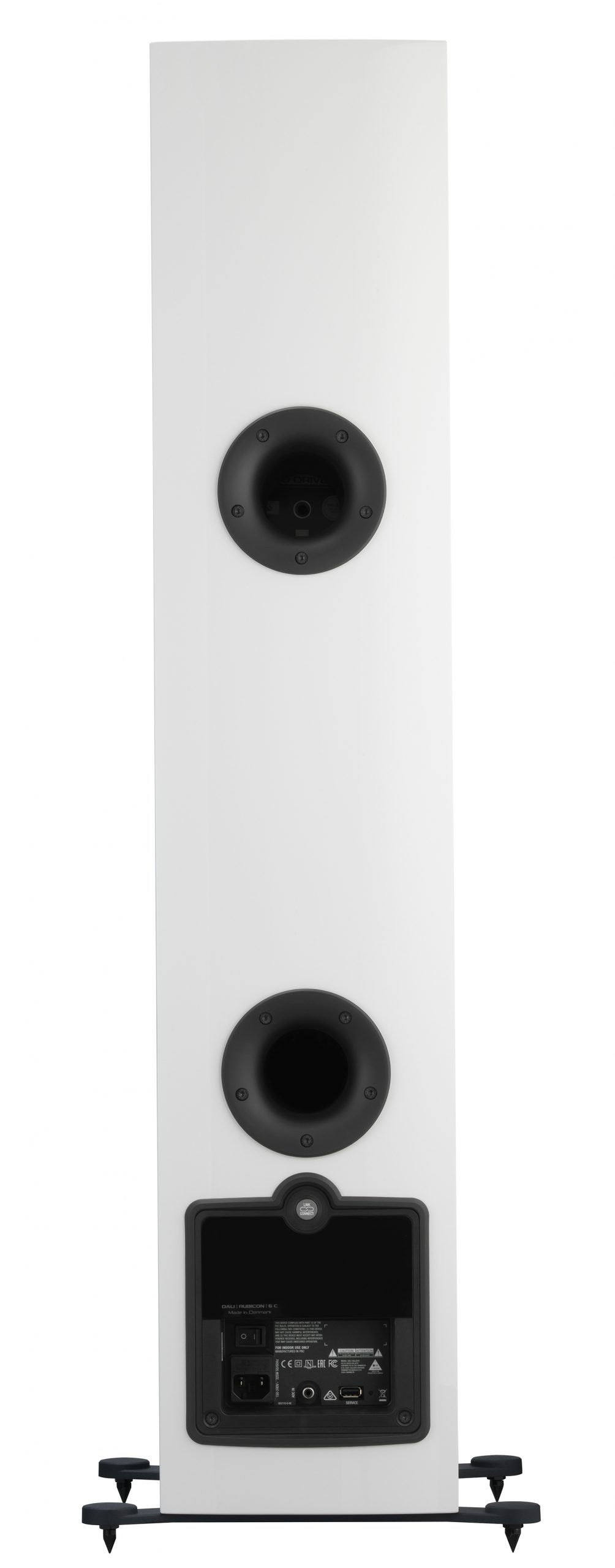
Conclusion
With Rubicon 6 C, Dali has taken a step up when it comes to active speakers. If not high-end, then at least the level just below. It is an excellent and very accurate sound reporter, which with its ability to dig up both beautiful and less beautiful details from your favorite recordings should be able to compete with the still few competitors in the same class.
The real challenge is whether Dali can convince the often conservative hi-fi enthusiasts to scrap their favorite amplifiers and stop worrying about speaker cables. If successful, buyers will get a combination that will be difficult to find in the same quality as separate components.

We think
In terms of sound, full value for money is delivered. Great furniture craftsmanship. The price is high. But it will be difficult to find a 4 x 250 W amplifier in the same quality for the price difference between the passive and the active version.
5 539 €
Specifications
- Elements: 2 x 6.5 ”bass, 29 mm dome tweeter, 17 mm band tweeter
- Construction principle: bass reflex, 3.5-way, active
- Frequency range: 37–30,000 Hz (+/- 3 dB)
- Built-in amplifier power: 2 x 250 W in each speaker
- Crossover filter: 2,600 Hz DSP-based / 800 Hz, 14 kHz passive
- Connections (hub): 2 x Analog line-in, 2 x optical digital, coaxial digital (RCA), Bluetooth (apt-X, apt-X HD and
- AAC)
- Music services (Bluesound): Tidal, Spotify, Deezer, TuneIn internet radio, Qobuz, etc.
- Resolution: 24-bit / 96 kHz
- Dimensions / weight: 20 x 96 x 38 cm (WxHxD) / 20.8 kg
- Colors: black high gloss, white high gloss, walnut veneer
- Web: dali-speakers.com
